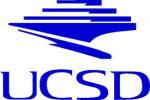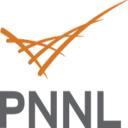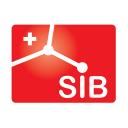Skyline is a freely-available, open-source Windows client application for building Selected Reaction Monitoring (SRM) / Multiple Reaction Monitoring (MRM), Parallel Reaction Monitoring (PRM - Targeted MS/MS and DIA/SWATH) and targeted DDA with MS1 quantitative methods and analyzing the resulting mass spectrometer data.Skyline helps users select peptides and transitions based on mass spectra from their own experiments or imported from public proteomics data repositories (MacLean et al., Bioinform
...continue to readProteinProphetTM automatically validates protein identifications made on the basis of peptides assigned to MS/MS spectra by database search programs such as SEQUEST
...continue to readThe computational mass spectrometry group, headed by Professors Vineet Bafna and Pavel Pevzner have developed a number of tools for computational proteomics.
...continue to readSPICKER is a clustering algorithm to identify the near-native models from a pool of protein structure decoys. The cluster is defined by the pair-wise RMSD metrics of the structural decoys. References: Y. Zhang, J. Skolnick, SPICKER: Approach to clustering protein structures for near-native model selection, Journal of Computational Chemistry, 2004 25: 865-871.
...continue to readMVP (Macromolecular Visualization and Processing) is a convenient tool for visualizing macromolecular structures and their derived information. It supports PDB format and EM density maps and has many drawing styles and color modes. It contains lots of convenient features, including computations of triangulated surfaces, depth, principal axes and estimate the secondary structures for protein structures etc. References: Dong Xu, Yang Zhang (2009) Generating Triangulated Macromolecular Surfaces by
...continue to readOpenMS is an open-source software C++ library for LC/MS data management and analyses, developed by researchers at three German Universities in Tübingen, Berlin and Saarbrücken. It offers an infrastructure for the development of mass spectrometry related software. OpenMS is free software available under the LGPL.
...continue to readThe Trans-Proteomic Pipeline (TPP) is a collection of integrated tools for MS/MS proteomics, developed at the Seattle Proteomics Center.
...continue to readGenePattern is a powerful genomic analysis platform that provides access to more than 150 tools for gene expression analysis, proteomics, SNP analysis, flow cytometry, RNA-seq analysis, and common data processing tasks. A web-based interface provides easy access to these tools and allows the creation of multi-step analysis pipelines that enable reproducible in silico research.
...continue to readProteomics tools developed by and used by the Yates team.
...continue to readPepNovo is a high throughput de novo peptide sequencing tool for tandem mass spectrometry data. PepNovo typically runs in less than 0.2 seconds per spectrum. PepNovo uses a probabilistic network to model the peptide fragmentation events in a mass spectrometer.
...continue to readThe ProMAT (Protein Microarray Analysis Tool) is a data analysis application for protein microarray data. The software was developed for use with ELISA microarray experimental data by the Statistics Group and the Cell Biology and Biochemistry Group at Pacific Northwest National Laboratory.
...continue to readVarious proteomic software
...continue to readCalSpec is a software module for fast processing of mass spectrometric data in 13C Metabolic Flux Analysis(MFA). protocols
...continue to readroSight PTM 2.0 allows identification and characterization of both intact proteins and peptides. Our PTM Warehouses are annotated with all known post-translational modifications (PTMs), alternative splicing events and single nucleotide polymorphisms (SNPs) using the technique of Shotgun Annotation developed in the Kelleher Research Group. ProSightPTM is the only proteomics software that allows the user to search their tandem MS data against PTM Warehouses containing the known biological complexi
...continue to readThe Database for Annotation, Visualization and Integrated Discovery (DAVID ) v6.8 comprises a full Knowledgebase update to the sixth version of our original web-accessible programs. DAVID now provides a comprehensive set of functional annotation tools for investigators to understand biological meaning behind large list of genes.
...continue to readA wide collection of Proteomic tools hosted by the Swiss Proteomics Society
...continue to readVarious stand alone software for proteomics and genomics.
...continue to readmsInspect is an open source application written in Java that allows you to process and view mass spectrometry (MS1) data in an mzXML file. You can inspect data, identify peptide features, generate peptide arrays using data from multiple runs, and export data to external applications for further analysis and collaboration.
...continue to readMZmine 2 is an open-source software for mass-spectrometry data processing, with the main focus on LC-MS data and with the main goal to provide a user-friendly, flexible and easily extendable framework with a complete set of modules covering the entire LC-MS data analysis workflow.
...continue to readMSight, created by the Proteome Informatics Group, was specifically developed for the 2-D representation of mass spectra along with data from the separation step. The software allows graphical exploration inside huge dataset and gives the scientist access to information that previously was hidden.
...continue to readPage: 1





















